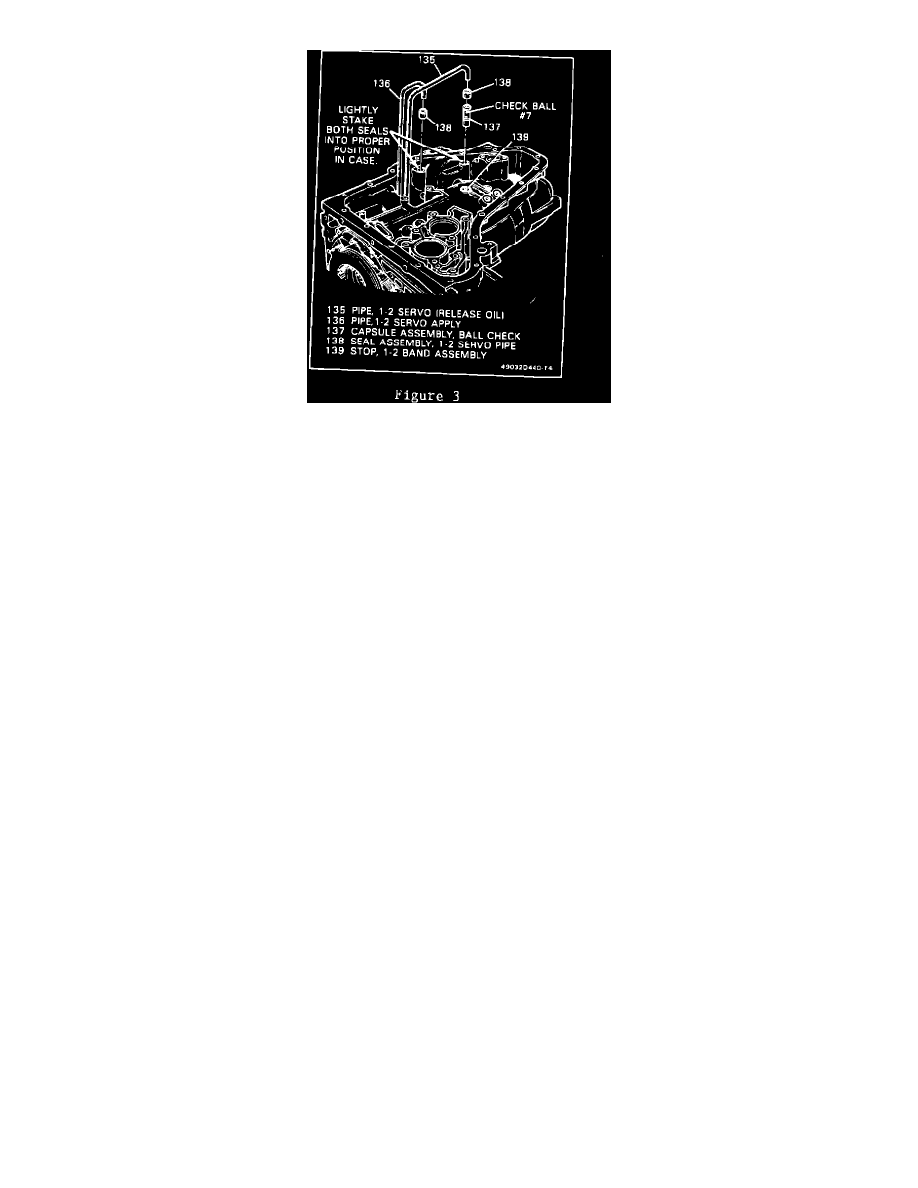Caprice Wagon V8-305 5.0L (1986)

-SERVO PIPES
Seals are included at both ends of the apply and release pipes (refer to Figure 2 and 3) and on the servo piston. A damaged seal in any position may
affect operation of the servo. A leaking apply pipe circuit may cause delayed forward engagement and slipping on takeoff when in first or second gear. A
leak in the release pipe circuit may cause a 2-3 upshift bump or shudder. A 1-2 servo piston leak may cause any/all of the condition(s).
On November 15, 1985 (Julian date 319) a revised production installation process for the 1-2 servo apply and release pipes/seals began, to prevent
cutting the seals during assembly.
When performing transaxle service, check transmission fluid for burned condition (burned fluid loses its red color and has an acrid odor). Burned fluid
may indicate major internal repair requirements, and is a condition to be considered for SRTA usage.
If fluid condition is proper, inspect the servo pipe seals at both ends of each pipe and the 1-2 servo piston seals. The original pipes can be reused in field
service. Replace any damaged seal as outlined in the appropriate Service Manual. Refer to the following list for service part numbers:
PART NUMBER
DESCRIPTION
8656567
Seal, 1-2 Servo Pipe To Valve Body
8656568
Seal, 1-2 Servo Pipe To Case
8658160
Ring, Oil Seal, 1-2 Servo Piston
IMPORTANT:
When installing the servo pipes into the control valve assembly, it is critical that the pipes are correctly aligned with the assembly bore
to ensure that seal damage does not occur.
